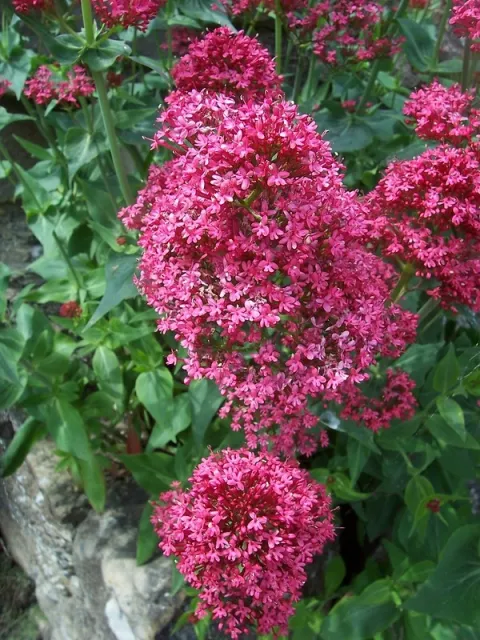As I was driving around my old neighborhood I saw a splash of color that caught my eye and piqued my curiosity. As I kept driving I kept seeing this fuchsia colored flowering shrub. I immediately came home and identified it. It was Centranthus ruber, commonly known as Red Valerian or Spur Valerian. From the Caprifoliaceae family, Red Valerian is a herbaceous perennial shrub that grows well in alkaline conditions and is not to be confused with true valerian since it has no medicinal value. It is known for its ability to produce in even poor soils from spring to frost with showy, fragrant blooms of star shaped pink, crimson or white flowers. These flowers which are each 1/2” in size, grow in dense terminal clusters known as cymes in upright stems that float above the foliage and grow from 1.5'-3' tall.[1]

It has fragrant flowers that need to be deadheaded when spent since these flowers turn into dandelion-like seed heads which are dispersed by the wind. They are also known for their long bloom times.
Deadheading also encourages more blooms to grow while preventing seeds from forming and the plant from being invasive. This plant has gray-green leaves that are oval and lanceolate which grow to be 4” long. These shrubs grow in alkaline conditions and can be found in odd places like limestone mortar castle walls and pavers.[2] When they grow on slopes they help prevent soil erosion. They are drought tolerant and reach heights of 2' to 3' tall and 18” to 24” wide. They can grow in full sun to partial shade and are native to Northern Africa and Southern Europe. In the U.S. they are primarily found on the West Coast.[3] You can grow this plant from seed, root division and cuttings.
The part I like best is that pollinators like hummingbirds can't resist their flowers with their ability to see colors from far away as well their stinky fragrance! The shape of the flower is an ideal match to their long tubular mouths. Bees, butterflies and moths like hummingbird hawk-moth love to feed on this plant. Essentially it has no real pest or disease problems making it a perfect flowering shrub. It can be grown in pots as long as the pot has adequate drainage. As long as you don't over water and control its spread Centranthus ruber is the perfect plant for the beginning gardener and old pros alike! I'm going to find one to plant on my hillside!
[1] Missouri Botanical Gardens article on Centranthus ruber
[2] From Website “The Spruce” Spur Valerian Care
[3] Taken from EDD- Early Detection & Distribution Mapping System

